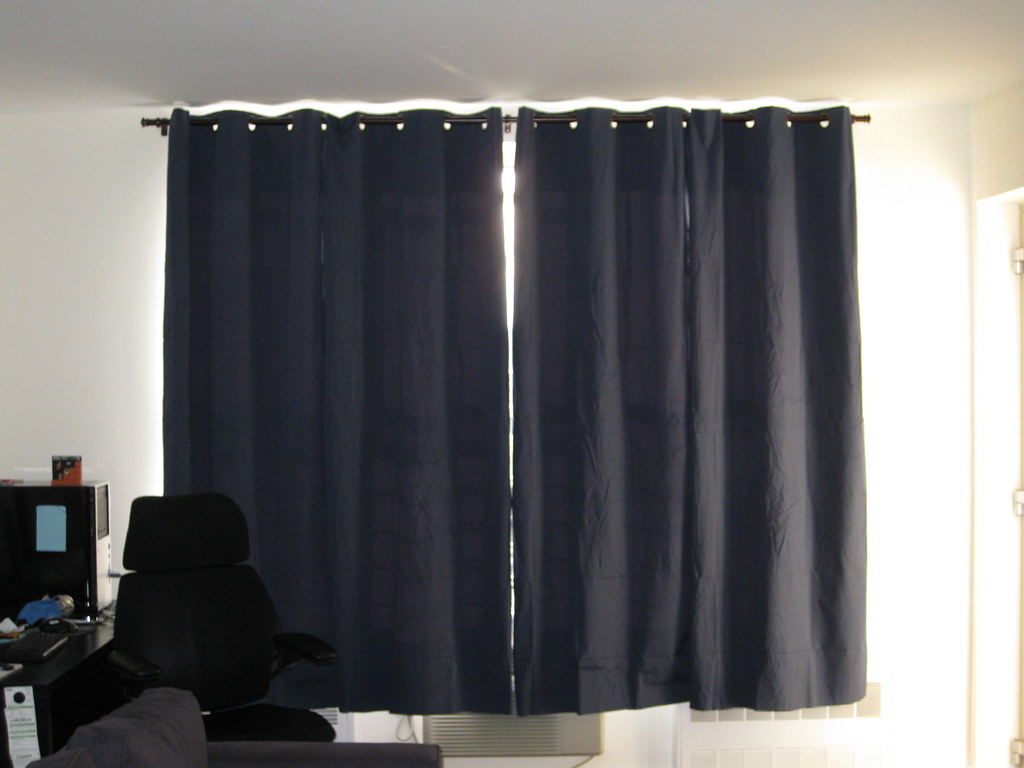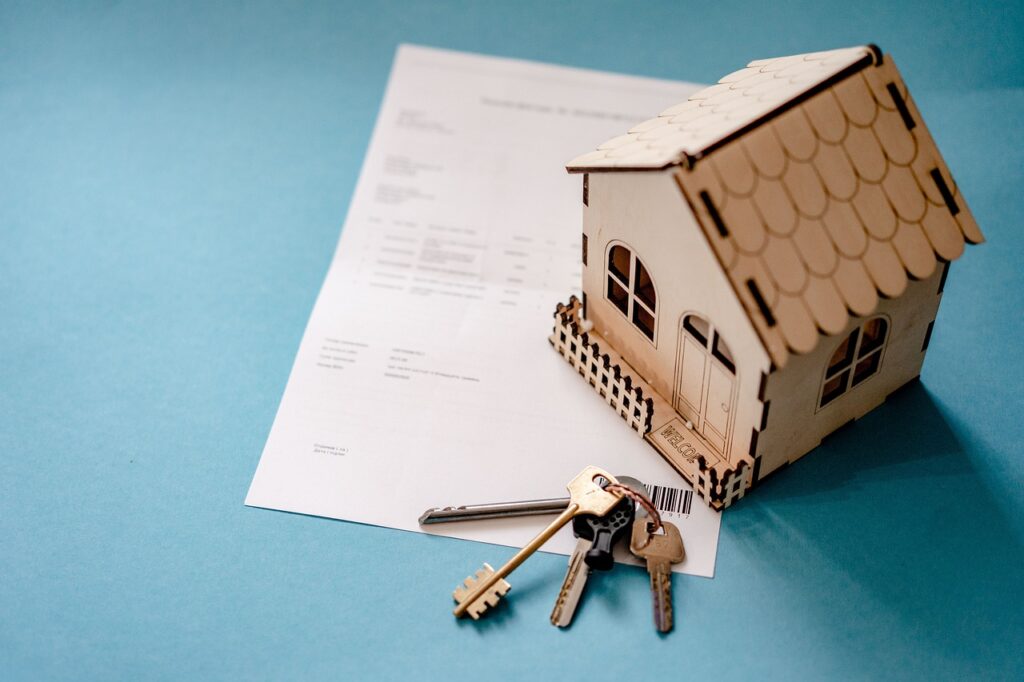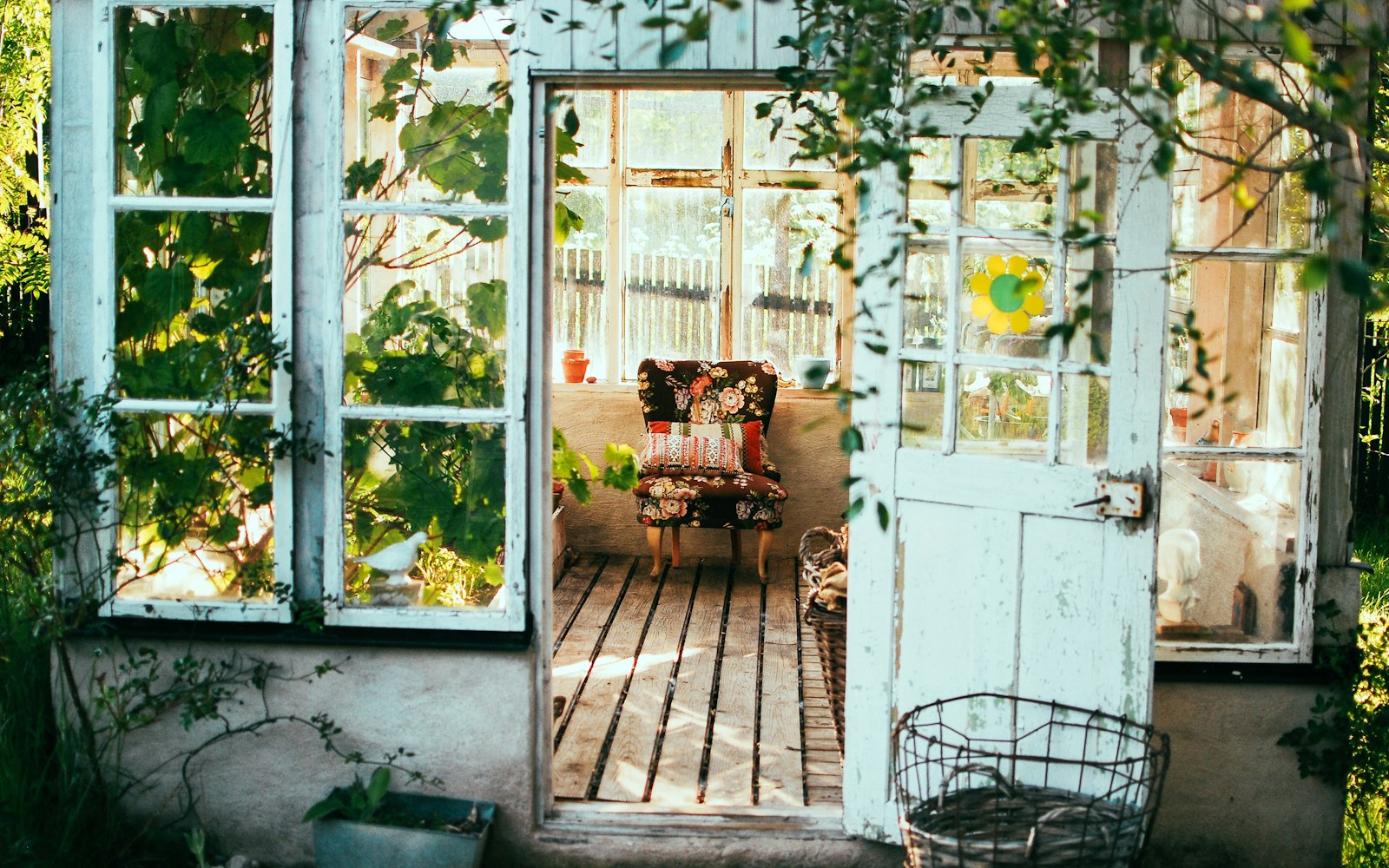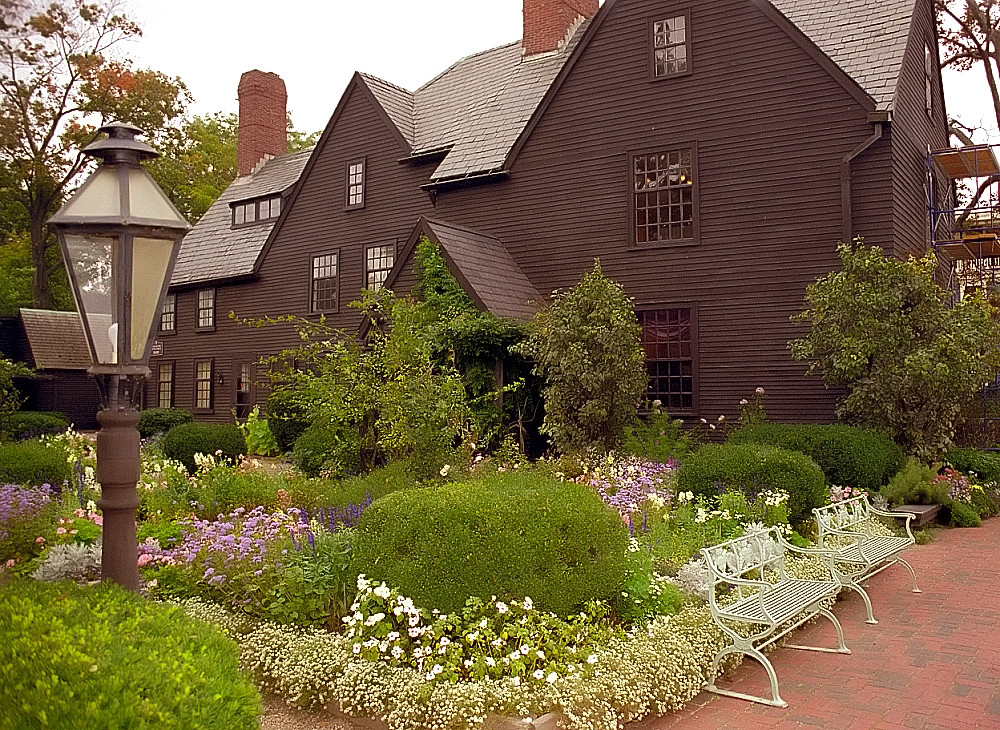
It’s a natural instinct to feel safe in your own home, to believe that simply locking your doors and perhaps installing a basic security camera is enough to keep your sanctuary protected. You might assume your neighborhood is safe, or that a would-be intruder would need to employ brute force to gain entry. However, the uncomfortable truth is that many homes that end up burglarized also thought they were secure, often becoming targets not because of sophisticated attacks, but due to simple, preventable mistakes—habits you don’t even realize are risky.
Burglars are often looking for the path of least resistance, seeking out opportunities that arise from carelessness, poor planning, or overlooked details. They don’t want to draw attention to themselves, preferring to waltz right in rather than force an entry. This means that a robust security strategy isn’t solely about expensive gadgets or impenetrable fortifications; it’s fundamentally about building smart, layered defenses, much like “building a solid game plan for peace of mind,” as home improvement specialist James Marino aptly puts it.
To truly safeguard your home and loved ones, it’s essential to identify and correct these common vulnerabilities before they’re exploited. We’ll delve into the most prevalent home security mistakes homeowners frequently make, offering clear, actionable solutions directly from security experts and seasoned professionals. By understanding these pitfalls and implementing the easy fixes, you can significantly enhance your home’s security and enjoy the peace of mind you deserve. Let’s take a closer look at these critical mistakes and transform your home into a less inviting target.
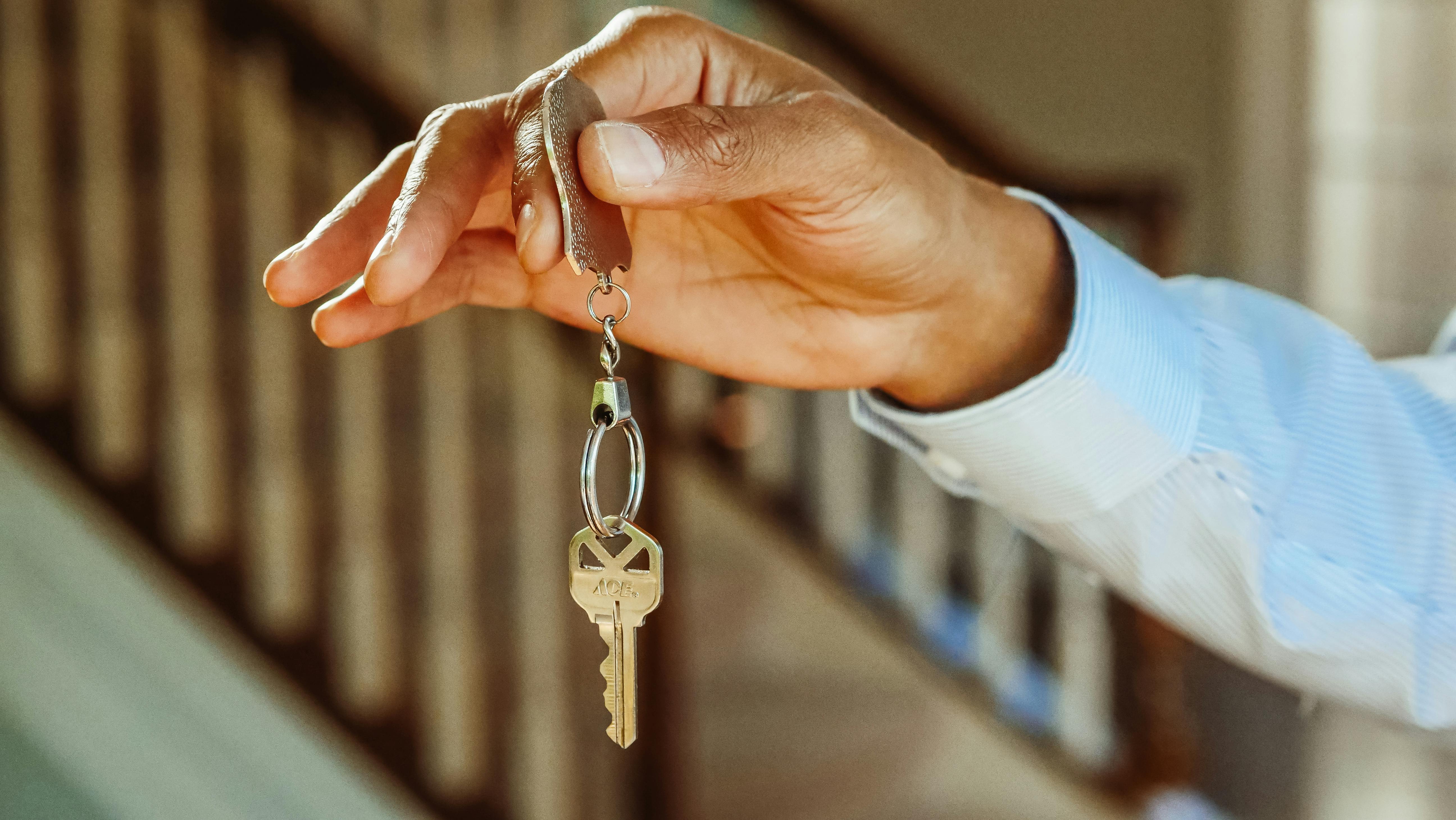
1. **Hiding Keys Outside**
Many homeowners, driven by convenience or the occasional absent-minded moment, opt to hide a spare house key outside, somewhere in the yard. This practice, while seemingly helpful for those times you accidentally lock yourself out or when someone is taking care of your home, is one of the most common and easily exploitable home security mistakes. The reality is that these hidden keys are not just convenient for you; they are “convenient for other parties who may want to enter your home without permission.”
Burglars are well-versed in these common hiding spots. Placing that key under the welcome mat is practically an open invitation, and they know to check under potted plants on your porch, in fake rocks, or above door frames. As one expert notes, leaving a key outside your home is “like leaving your car running with the doors unlocked.” It’s a fundamental error that provides an intruder with immediate, unobstructed access, potentially putting anyone inside in danger without any interference.
To rectify this significant oversight, several secure alternatives exist. Instead of placing a key in a spot where anyone looking can find it, consider more robust solutions. One effective method is to put your key in a lock box that requires a code for access, making it accessible only to those you trust with the combination. Another smart move is to use a lock with a keypad that requires a PIN, eliminating the need for a physical key altogether. Furthermore, modern smart locks allow for remote unlocking, so you can grant access to friends or relatives even when you’re not home, and you can even create digital passes for other people to make management easier. If you must keep a spare, the advice is clear: “The further from the house a key is hidden, the better,” and “A disguised item, such as a fake rock, is only useful if hidden among similar items, like actual rocks.” But ultimately, “Don’t make it easy for a criminal!”
Read more about: Fact Check: 10 Blockbuster Movies That Seriously Bungled Their Science
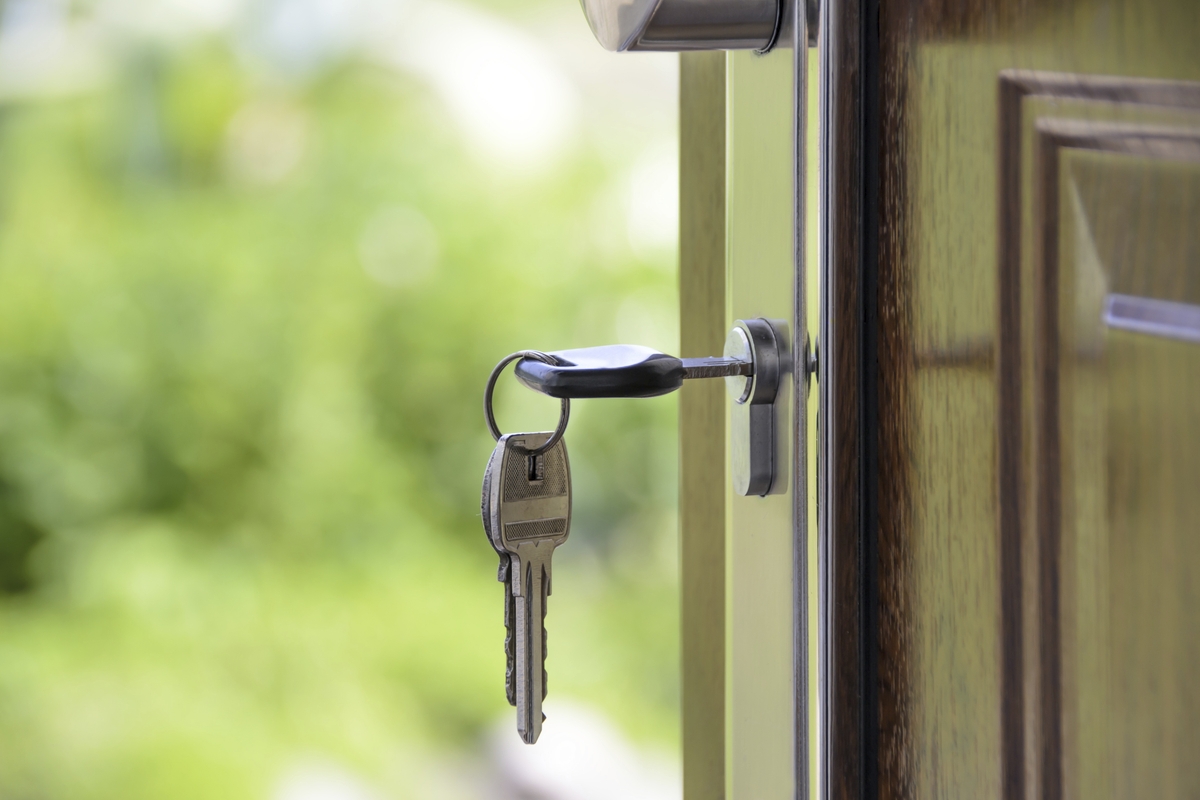
2. **Failing to Lock Windows or Doors**
This might seem incredibly obvious, but one of the most significant security vulnerabilities homeowners create is simply neglecting to lock windows or doors. While it’s easy to assume that any potential burglar would need to brute-force their way into your home, the truth is that “they’re often looking for the lowest effort and lowest impact when breaking in because they don’t want to draw attention to themselves.” Nothing makes their job easier and less conspicuous than finding an unlocked entry point, allowing them to “waltz right in.”
Beyond the primary entry doors, many people overlook the security of their windows. It’s common to remember to lock the front door, but what about that bathroom window you cracked for ventilation, or the upstairs window you didn’t think anyone could reach? Burglars are often more resourceful than homeowners give them credit for, frequently using “ladders, fences, or even climb onto trash bins to access second-story windows.” Leaving any window unlocked, even slightly, significantly simplifies their task and creates an unnecessary risk.
To fortify these fundamental entry points, vigilance is key. “Regularly check all windows, and install window stops or locks that limit how far they can open.” Investing in a sensor system that can tell if a door or window is opened provides an immediate alert if a breach occurs. For doors, internet-connected smart locks offer the convenience of remote locking, and some systems can even “alert you when a lock has been left unlocked so you can address it.” Additionally, integrating “door and window motion sensors that alert you whenever they are opened, and remind you when someone forgets to close them” provides an essential layer of continuous protection, ensuring you’re always aware of your home’s vulnerable points, even when you’re not there.
Read more about: 13 Essential Red Flags: Your Step-by-Step Guide to Inspecting a Used Performance Car Like a Pro

3. **Too Much Privacy / Obscured Views (Landscaping)**
While a beautifully landscaped yard enhances curb appeal and privacy, certain planting choices can inadvertently create significant security risks. Bushes, shrubs, and trees planted too close to your home can provide perfect cover for intruders. As one security expert points out, “Bushes and trees up against the side of the home provide cover… and they can provide cover for intruders.” “Anything that obstructs the view of your house is risky” because “overgrown bushes, shrubs, and trees can signal a good hiding spot for intruders.” If you let your plants “grow too high or wild, they can get in the way of your smart cameras and even provide cover for trespassers trying to get inside your home.”
Even privacy fences, while offering a sense of seclusion, can be a double-edged sword. While “the biggest security benefit of a privacy fence is keeping prying eyes off your property,” allowing it to be “too ‘fortress-like'” can actually aid criminals by obscuring their activities. “If someone can’t see what’s in your yard… it’s much less tempting for them to try anything,” but an overly solid fence can also prevent neighbors or passersby from spotting suspicious activity. “If the pickets are completely closed, you and your neighbors won’t be able to spot prowlers.” Laura Finson of Brinks Home adds that when placing security cameras, it is crucial to “ensure each camera captures the desired field of view without obstructions, such as trees.”
The solution lies in strategic landscaping and diligent maintenance. “Correct this mistake by maintaining low-height or thin-growing shrubs next to the home and keeping the taller, denser plants more distant.” You should “maintain clear visibility around your yard by keeping bushes and hedges trimmed to 3 feet or shorter.” This simple act “makes it difficult for anyone to move around your yard without being noticed.” For fences, while tall designs can discourage climbing, consider a design that isn’t completely solid, allowing some visibility. The goal is a “well-maintained, open yard” that “gives fewer places to hide and makes suspicious activity easier to spot.” Trim bushes near windows and keep trees away from second-story access points to eliminate potential hiding spots and climbing aids.
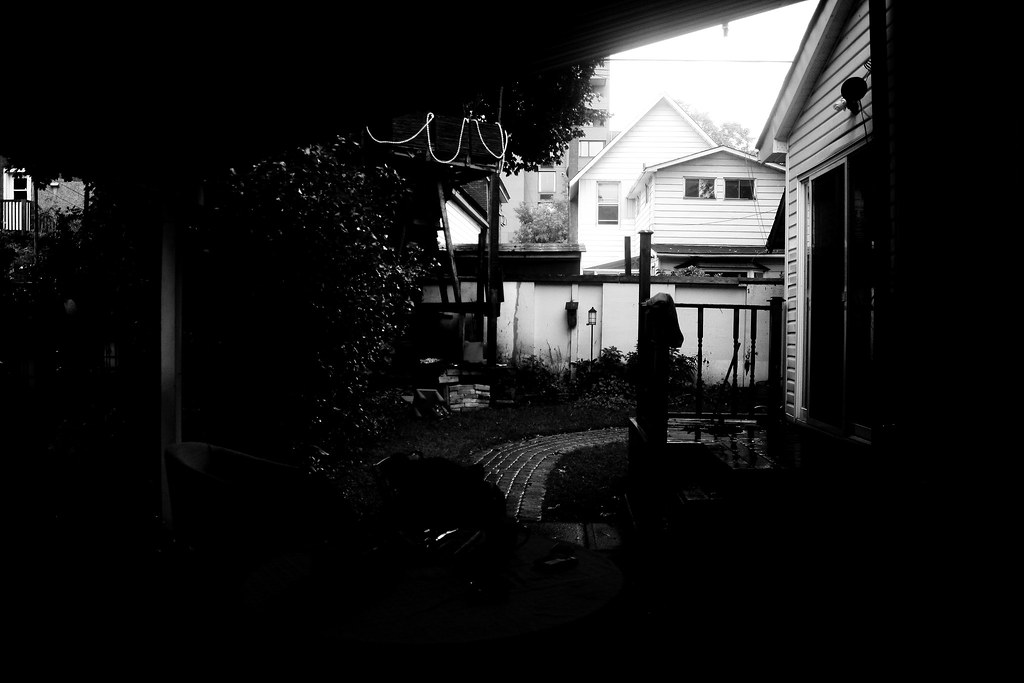
4. **Installing Outdoor Static Lights / Dark Yard**
Many homeowners instinctively turn to outdoor lighting as a primary security measure, installing static lights that turn on at dusk or are controlled by a timer. While these fixtures do illuminate your yard, they often create an unintended consequence: “dense pockets of shadows that make great hiding spots.” This common security mistake essentially provides cover for intruders who prefer to operate under the cloak of darkness. A dark yard, far from offering privacy, can actually be an “invitation to skulk around,” making it easier for trespassers to “peek into your windows and see what goodies are inside your home.”
The issue is compounded when homeowners rely on a single, front-facing light, assuming it’s sufficient to deter crime. This often leaves crucial areas like “dark corners, side yards, and back doors… hidden in the shadows.” A house that appears “completely dark when no one is home” signals abandonment, making it “very inviting to intruders.” The effectiveness of lighting as a deterrent hinges on its ability to eliminate these hidden areas and provide an element of surprise, rather than simply offering static illumination that can be easily circumvented.
To effectively leverage outdoor lighting for security, a more dynamic and intelligent approach is required. “Motion sensor lighting and security cameras provide much better security” because “motion sensors provide the element of surprise.” These lights, especially those integrated with security cameras, “work with motion detection and object recognition so they will only light up if they see a person, saving your eyeballs during the dark hours.” “Enhancing your yard’s lighting at night is a more effective alternative.” Consider adding “solar-powered lights along walkways, motion lights near entry points, and smart bulbs you can control remotely.” “Automated lighting can help give your home the appearance that someone is there without breaking the bank on electricity costs” by allowing you to “create schedules for when you want the lights to be on, right down to specific blocks of time on certain days of the week,” or even setting rules for triggers like motion detection.
Read more about: Beyond the Bite: 12 Simple, Actionable Ways to Rodent-Proof Your Car’s Engine and Wiring
5. **Visible Valuables**
It’s a fundamental oversight that many homeowners commit without even realizing it: forgetting that windows are a “two-way portal.” Just as you can see out of them, a potential intruder can easily see in. This vulnerability becomes particularly critical when valuable items are left exposed and visible from outside your home. If you have “especially valuable items, consider whether they can be seen from a ground-floor window,” such as first-floor bedrooms where jewelry or electronics might be placed on dressers. Even large items like televisions, which often dictate their placement within a room, can present “difficult home-security positioning issues” if they’re easily viewable from the street.
The problem is simple: “That brand-new TV or laptop? It might look sleek in front of the window, but it’s also advertising what’s inside your home.” Burglars frequently conduct surveillance, and they “often peek through windows to assess if a break-in is worth it.” Visible valuables act as a clear signal of potential reward, making “your home more attractive” as a target. This unwitting display of your possessions provides criminals with valuable intelligence, helping them determine the value of a potential score before they even attempt to breach your home’s defenses.
The fix for this common mistake is straightforward and requires only a small shift in habit. “In that case, pull the shades or shut the blinds each evening,” especially for ground-floor windows or any window that offers a clear view into your living spaces. “Similarly, give a little thought to putting away valuables by either tucking them out of sight or in a dedicated secret hideaway” when they’re not in use. The overarching advice is to “keep curtains drawn at night, and avoid leaving expensive electronics, jewelry, or even packages in plain view.” For areas like garages, which often have windows, consider practical solutions such as “frosting the glass or using blinds” to prevent prying eyes from gaining a clear view of your tools, bicycles, or other stored items. By obscuring these potential visual cues, you remove a key piece of information that burglars rely on, making your home a less appealing target.
Read more about: Car Gone? Your 15-Step Action Plan to Maximize Recovery and Navigate the Aftermath
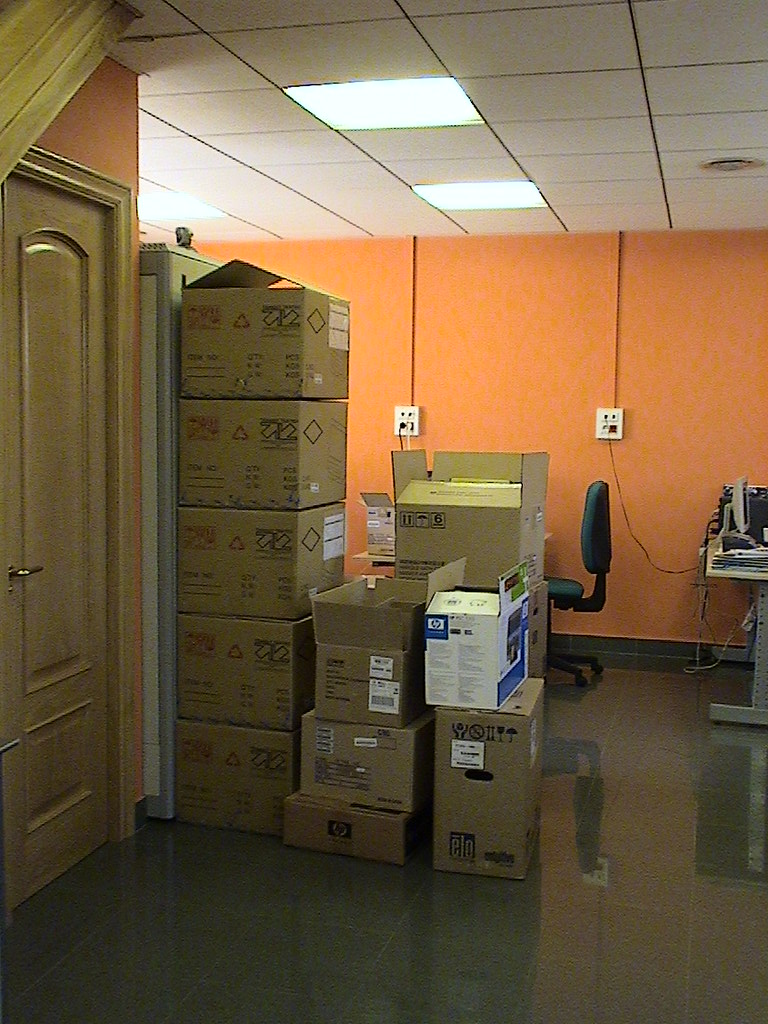
6. **Packaging Left by the Curb**
It’s a fundamental oversight that many homeowners commit without even realizing it: forgetting that windows are a “two-way portal.” Just as you can see out of them, a potential intruder can easily see in. This vulnerability becomes particularly critical when valuable items are left exposed and visible from outside your home. If you have “especially valuable items, consider whether they can be seen from a ground-floor window,” such as first-floor bedrooms where jewelry or electronics might be placed on dressers. Even large items like televisions, which often dictate their placement within a room, can present “difficult home-security positioning issues” if they’re easily viewable from the street.
Here’s a common scenario: you’ve just invested in a brand-new television or laptop, and you’re eager to get rid of the cumbersome cardboard box. You haul it out to the curb for trash collection, thinking nothing of it. However, this seemingly innocent act is one of the most common home security mistakes because it openly broadcasts the presence of an expensive new item in your home. Burglars frequently scout neighborhoods, and these visible clues are like flashing neon signs, telling them exactly what treasures might be awaiting inside.
The fix for this common mistake is straightforward and requires only a small shift in habit. “In that case, pull the shades or shut the blinds each evening,” especially for ground-floor windows or any window that offers a clear view into your living spaces. “Similarly, give a little thought to putting away valuables by either tucking them out of sight or in a dedicated secret hideaway” when they’re not in use. The overarching advice is to “keep curtains drawn at night, and avoid leaving expensive electronics, jewelry, or even packages in plain view.” For areas like garages, which often have windows, consider practical solutions such as “frosting the glass or using blinds” to prevent prying eyes from gaining a clear view of your tools, bicycles, or other stored items. By obscuring these potential visual cues, you remove a key piece of information that burglars rely on, making your home a less appealing target.
Read more about: Beyond the Badges: 14 Low-Key Trucks That Quietly Outperformed Expectations

7. **Alarm System Line of Sight**
Alarm systems are undoubtedly wonderful tools for enhancing home security, providing a crucial layer of defense. However, even the most advanced systems can be undermined by simple installation oversights. One common mistake homeowners make is allowing the control pad for their alarm system to be visible from a first-floor window. This allows potential thieves to peer in and quickly assess whether the system is activated, essentially giving them an advantage before they even attempt entry. An alarm company yard sign won’t mean much if a burglar knows the system is off.
The true power of an alarm system lies in its deterrent effect and its ability to alert authorities if a breach occurs. But when the system’s operational status is openly displayed, it loses a significant portion of its preventative value. A burglar observing an inactive alarm system can proceed with greater confidence and less urgency, increasing the likelihood of a successful break-in without immediate consequence. This compromises the very purpose of having a security system in the first place.
To correct this critical flaw, consider intelligent alternatives that integrate smart technology. Home improvement specialist James Marino suggests pairing a home assistant like Amazon Echo, noting, “It can be a handy tool for home security, especially with features like Alexa Guard. It listens for unusual sounds like breaking glass or alarms and can send alerts to your phone.” This offers a discreet monitoring solution. Furthermore, by pairing a home assistant “with something like inexpensive door sensors, smart locks, or even a few budget-friendly indoor cameras, and you’ve got yourself some pretty solid DIY security.” The goal is to make your security system effective without broadcasting its vulnerabilities.
Read more about: Guard Your Investment: 15 Worst Storage Mistakes That Could Ruin Your Classic Car Over a Decade

8. **Social Media Travel Posts**
In our hyper-connected world, social media has become an integral part of staying in touch with friends and sharing life’s moments. It’s a fantastic tool for sharing travel experiences and photos, but it also presents a significant home security risk if not used judiciously. Many homeowners fall into the trap of oversharing their travel plans in real-time, forgetting that social media channels are built as public platforms, akin to “talking to a crowd with a megaphone.” This unwittingly provides burglars with precise information about when your home will be unoccupied.
Criminals are increasingly sophisticated, and they actively monitor social media channels for potential targets. They can easily search for keywords like “trip,” “travel,” “vacation,” and “out-of-town” to identify homes with absent occupants. Publicly announcing that you’re away, especially with geotags or specific departure and return dates, is essentially an open invitation for burglars. Your beach selfies or “off to Europe!” captions, while exciting for your friends, can make your home an easy target for those with ill intentions.
To mitigate this risk, a strategic shift in your social media habits is crucial. The primary advice is to “wait until after you come home to share information about your trip!” This ensures your home isn’t advertised as empty while you’re away. If you absolutely need to let certain people know about your trip, always “ensure that you mark the posts as ‘private’ on that social media platform.” By limiting the audience and searchability of your posts, you can make sharing your schedule much more secure. Additionally, regularly reviewing and culling your followers can help ensure that only trusted individuals have access to your personal updates.
Read more about: Beyond the Glare: 12 Savvy Strategies A-List Stars Use to Own Their Privacy in the Digital Age

9. **Mail Pileups**
Few things advertise an absent homeowner quite as clearly as a mounting pile of mail and newspapers overflowing from the mailbox or scattered on the porch. This seemingly minor oversight is, in fact, one of the most visible and easily identifiable signs that a home is currently unoccupied. Criminals don’t even need to slow down their vehicle to spot these clear indicators, making a quick assessment of a property’s vulnerability from the street.
An overflowing mailbox or a collection of newspapers signals abandonment, painting a picture of an empty home ripe for exploitation. This visual cue tells potential intruders that there’s no one around to collect deliveries, check on the property, or notice suspicious activity. It’s an unambiguous signal that the “occupants are away,” making your home a more attractive and less risky target for a burglar looking for an easy score.
The solution to avoiding this common pitfall is simple yet effective: proactive management of your deliveries. Before you leave for an extended period, “contact your local post office and/or newspaper to suspend service while away.” Because these services sometimes miss a day or take a little bit of time to cease delivery, it’s also a good idea to “ask a friend or neighbor to swing by and collect any mail or newspapers that accumulate.” This small act of having someone create “a little activity around the front of the home also helps to make it look occupied.” Furthermore, investing in a “security mailbox” can provide an additional layer of protection, preventing mail theft even when you are home.
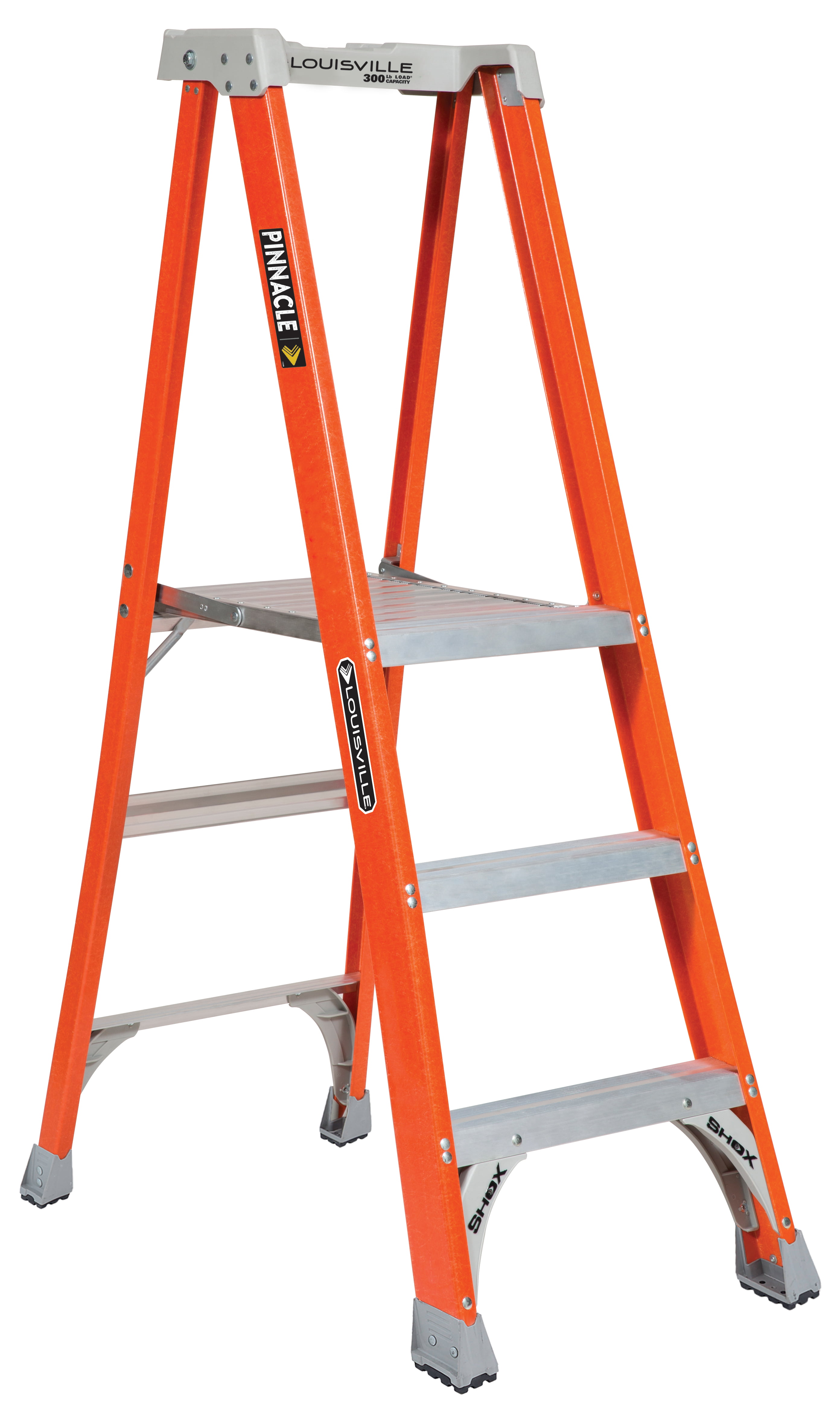
10. **Ladder Access**
Many home security tips tend to focus on first-floor issues, and for good reason—burglars often prefer to remain out of sight and move quickly, making ground-level entries common. As a general rule, most burglars won’t bring a ladder with them on a break-in, as it draws unwanted attention. However, homeowners sometimes inadvertently make their homes easy targets by providing simple access to their second floor. This significant oversight can turn a seemingly secure upper level into a vulnerable entry point.
Leaving ladders lying around the yard or even hanging on the back of the garage is a major security blunder. When these tools are readily available, you are essentially equipping potential prowlers with the means to access second-story windows or balconies that would otherwise be out of reach. Most burglars act on opportunity, and they typically won’t consider a second-floor entry unless you make it exceptionally easy for them by leaving a ladder conveniently on hand, transforming a difficult task into a simple stroll up.
The fix for this mistake is straightforward: prioritize secure storage for your ladders. Instead of leaving them exposed and accessible, “store your ladder safely away” in a locked shed, garage, or even secured against a wall where it cannot be easily removed or used by unauthorized individuals. This simple habit removes a critical tool that could aid a burglar in bypassing your first-floor defenses and gaining access to a less-protected area of your home, thereby eliminating an unnecessary opportunity for crime.
Read more about: The Definitive Guide: Ranking the 13 Best Truck Bed Covers of 2025 for Security, Value, and Practicality

11. **Not Maintaining Your Tech**
In the era of smart homes, technology has revolutionized home security, bringing us powerful tools like security cameras, smart locks, and sophisticated alarm systems. While these innovations offer incredible protection, they also introduce a critical, often overlooked vulnerability: “technology also introduces a number of potential points of failure for your security system.” Many homeowners incorrectly assume that once installed, their smart security devices will simply “just work” indefinitely, neglecting the vital task of ongoing maintenance.
This oversight can manifest in several ways. Homeowners might forget to check the power source of their devices—are they plugged in securely, or are battery-powered devices running low? A power outage could render plugged-in devices inoperable, and without a check, you might not realize your system is down. Furthermore, neglecting physical maintenance, such as cleaning camera lenses, can degrade performance. As CNET’s MacDowell advises, “Check that your cameras are recording and that the lenses are clean,” urging homeowners to “Just like you winterize your home, think about ‘summerizing’ it too — especially if you’ll be away more often.”
Beyond physical upkeep, software maintenance is equally crucial. Failing to keep the software on your smart security devices up to date can leave you exposed to critical flaws. Outdated firmware can not only render your technology faulty or inoperable but also leave you vulnerable to cybersecurity attacks, potentially allowing intruders to disable your system remotely or gain access to your network. Consistent updates ensure optimal performance, patch security holes, and keep your devices running as intended, providing the reliable protection you invested in.
Read more about: Unlocking Influence: How a Deep Understanding of Psychology’s Foundations Can Empower Your Salary Negotiations
By understanding these common pitfalls and actively implementing these straightforward solutions, you can significantly fortify your home against potential threats. A truly secure home isn’t just about the locks on your doors or the cameras watching your property; it’s about fostering a proactive mindset, continuously evaluating vulnerabilities, and adopting smart habits that make your home a less appealing target for burglars. So go ahead, check your tech, tidy your yard, and secure your digital footprint—your peace of mind is worth it.


